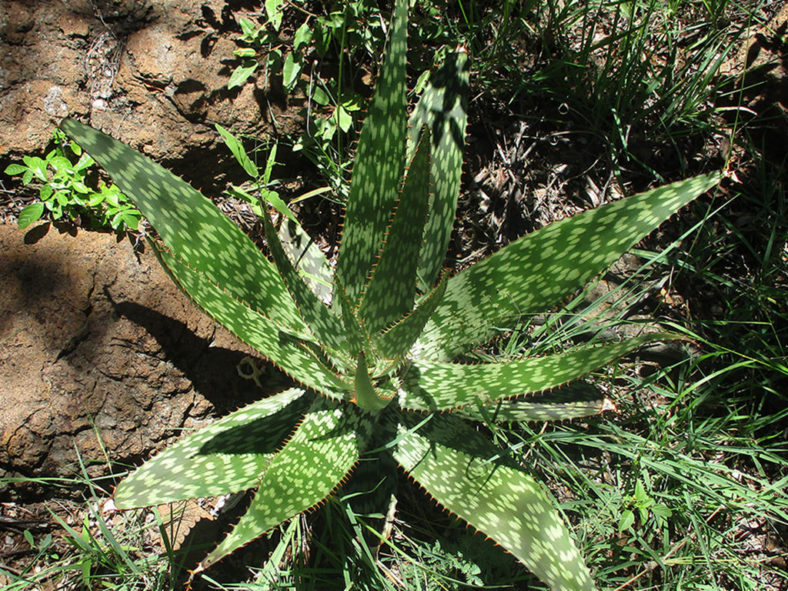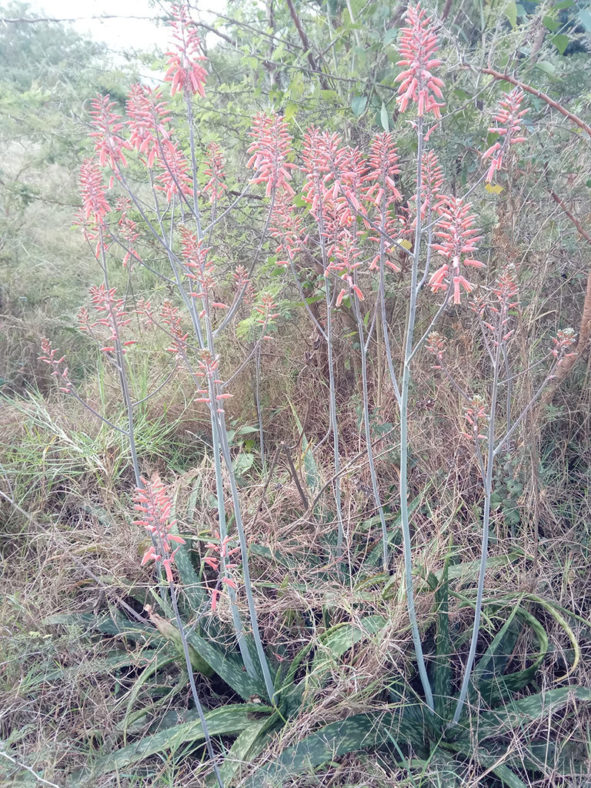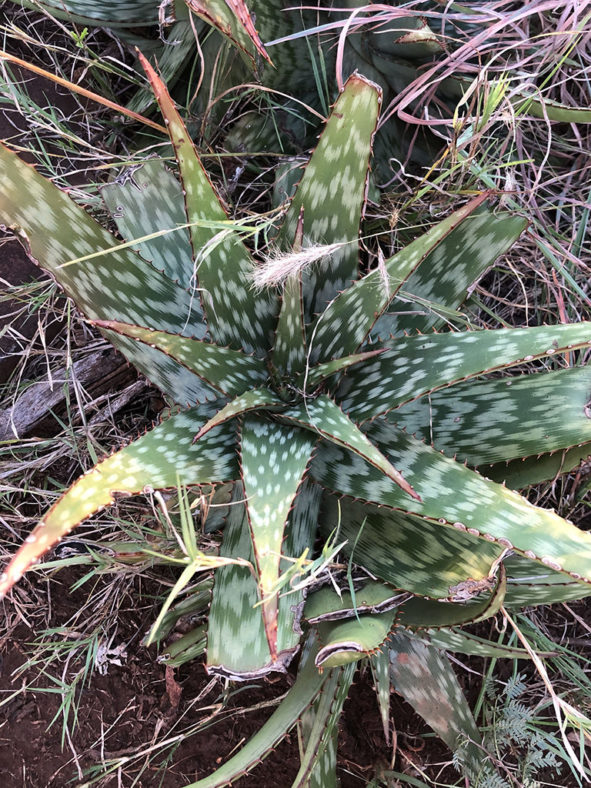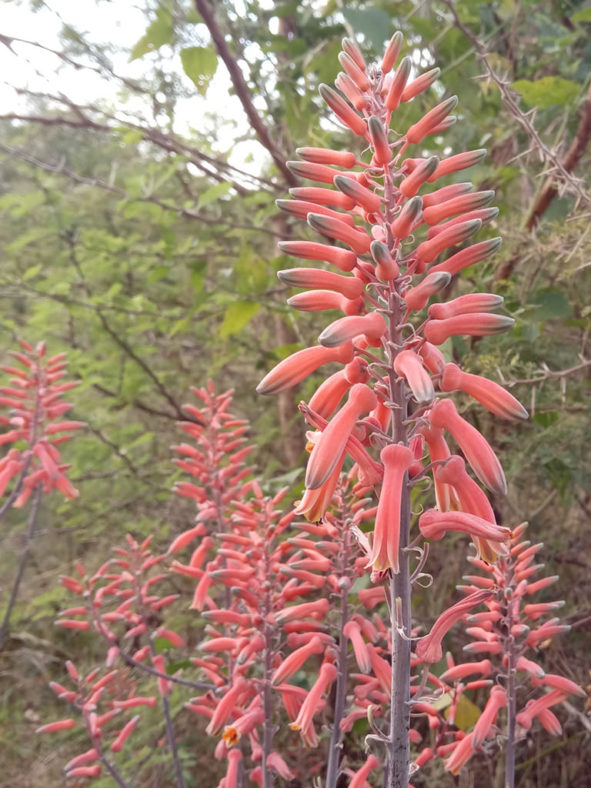Scientific Name
Aloe greatheadii Schönland
Common Name(s)
Greathead's Spotted Leaf Aloe, Spotted Aloe
Synonym(s)
Aloe greatheadii var. greatheadii, Aloe pallidiflora, Aloe termetophyla
Scientific Classification
Family: Asphodelaceae
Subfamily: Asphodeloideae
Genus: Aloe
Etymology
The specific epithet "greatheadii (grayt-HED-ee-eye)" honors Dr. J. B. Greathead, who collected the type specimen with Dr. S. Schönland in August 1903.
Origin
Aloe greatheadii is native to Southern Africa (mainly in Zimbabwe but also found in Zambia, Malawi, Congo, Botswana, Mozambique, and South Africa). It grows in wooded grasslands and open woodland at elevations that range between 3,280 and 5,450 (1,000 and 1,660 m).
Description
Aloe greatheadii is a succulent plant that forms a stemless, usually solitary rosette of greyish-green leaves with elongated whitish spots arranged in irregular transverse bands on the upper surface. The leaves can grow up to 16 inches (40 cm) long and 4.8 inches (12 cm) wide and have sharp reddish-brown teeth along the margins. The lower surface of the leaves is unspotted.
The flowers are pale pink to orange-red and appear in racemes on erect, typically branched inflorescences in winter (June to July in its natural habitat). The inflorescences can reach up to 5.6 feet (1.7 m) in height.
Aloe greatheadii is a part of the Saponariae series, together with Aloe davyana, Aloe maculata, Aloe petrophila, and Aloe umfoloziensis.

How to Grow and Care for Aloe greatheadii
Light: When growing A. greatheadii indoors, place your plant in a window that gets plenty of bright indirect sunlight. Rotate the pot once or twice a week so that all sides of the plant receive equal lighting. Outdoors provide light shade, especially during the hottest parts of the day.
Soil: Plant A. greatheadii in a well-drained soil mix specially formulated for succulents or make your own. Drainage is essential because too much moisture around roots can cause root rot.
Hardiness: When temperatures shift below 50 °F (10 °C), it is time to bring your plant back inside. A. greatheadii can withstand temperatures as low as 25 to 50 °F (-3.9 to 10 °C), USDA hardiness zones 9b to 11b.
Watering: This succulent does need regular watering but is very tolerant of drought conditions for short periods. Water deeply, but only when the soil is dry. Cut back on watering during the winter months. Do not let water stand in the rosettes.
Fertilizing: A. greatheadii generally does not require fertilizer but may benefit from the extra nutrients. Feed with a fertilizer for succulents in spring and summer only. Be sure to follow the label directions.
Repotting: This plant is not particularly fast-growing and will only rarely need repotting. Repot it in the spring in a container a few inches larger in diameter every few years to keep it from becoming rootbound.
Propagation: Propagating A. greatheadii can be done using offsets, cuttings, or seeds from a mature plant. Remove offsets from the mother plant or take cuttings with a sharp knife in late spring or early summer. For best results, sow seeds during the warm months.
Learn more at How to Grow and Care for Aloe.
Toxicity of Aloe greatheadii
A. greatheadii is not listed as toxic for people and pets.
Links
- Back to genus Aloe
- Succupedia: Browse succulents by Scientific Name, Common Name, Genus, Family, USDA Hardiness Zone, Origin, or cacti by Genus
Photo Gallery
Click on a photo to see a larger version.


